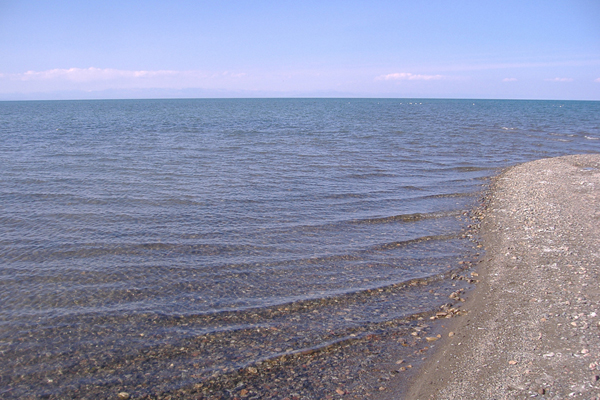

UNESCO has recognized this northernmost part of the Great Lakes Basin as a World Heritage Site in two categories. First, for the presence of rare and endangered animals and plants. And second, for its untouched and pristine native landscapes. This includes the nearby Harhiraa and Turgen Mountains, which are snow-capped and home to a number of glaciers. In the east is Altan Els (Golden Sands), the northernmost sand dunes in thecountry. In total, the Uvs Lakes basin is 160 km from north to south and 600 km from east to west.
Uvs Nuur is the largest lake (3350 sq.m.) in Mongolia and is 84 km across at its widest point. It is located only 759 meters above sea level. Visitors must be prepared for mosquitoes in the summer. It is a salt water lake which is not easy to get to. Compared to similar altitudes, it has the coldest, warmest and driest conditions on Earth. Temperatures of 40 degrees centigrade below freezing are common in winter, the record being -58 degrees. In the summer +40 degrees is not uncommon.
The surrounding area consists of steppes, mountains, forests, wetland and deserts. It supports a variety in birds, both resident waterfowl and migrating birds. Mammals include snow leopard, mountain sheep (argali), marbled polecat and ibex.
Recommended


Mongolian winter is the most incredible winter that one might experience and there is plenty to see and enjoy during a winter travel. Glittering white snow, clear fresh air, sun, and little chills are the image of Mongolian winter. Taking this fan...
Duration: 3 Days / 2 Nights
Destination: Gobi - Central


All of Mongolians celebrate the Lunar New Year, which is called in Mongolia “Tsagaan Sar” or the “White Moon”. It is widely celebrated throughout the country around January or February according to the combination of Solar-...





